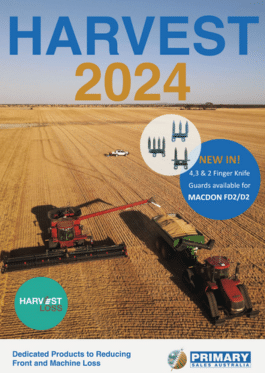
Mr Mice Guy, CSIRO Research Steve Henry is known for his expertise in cropping systems
looking at mice populations. He’s at the forefront of research in this field have dedicated over 30
years of his life to pest research with a specific focus of the last 10-12 have been looking at
mice.
With high commodity prices and cropping yields at an all-time high, finding a solution or effective
management solution for mice populations is at the forefront of many growers, advisors and
industry bodies’ agendas.
Steve’s research with the CSIRO through funding from GRDC and NSW Governments has
focused on looking at mouse biology, ecology, and bait efficacy with a focus now shifting to
understanding economic losses that are being seen both pre and post farm gate.
From a farming background, Steve has evolved his understanding of systems combined with
research to be able to deliver and engage with farmers on a level that they are able to relate to
and understand.
“As a result of research, GRDC has supported and development of a range of projects, aimed at
understanding mice in no-till systems and developing strategies to reduce their impact on farm”.
Today’s agricultural cropping landscape have developed farm beyond the conditional sowing
system, especially in WA where we are seeing 80-90% adoption of minimum or zero-till
cropping systems. “The data from research being undertaken is helping us to understand
mouse numbers and the variables that drive change in their population and behaviour”.
In the past, mice use to live on the edges of crops due to highly favourable cropping systems.
Today with the technological advancements and uptake of minimum / zero tillage cropping
systems our farming landscape/environment is a lot more favourable for mice and or pest
populations. We’ve unknowingly created the ideal environment for mice providing them with
food and a habitat for their existence. The benefits of zero and no-till cropping systems have
delivered advancements in relation to crop yields that far outweigh conventional systems, the
biggest challenge is encouraging farms to change their mindset and management towards pests
to be proactive rather than reactive in their approach.
CSIRO in partnership with GRDC has developed MouseAlert website, providing growers,
advisors and agronomists with a platform to report and share information about mice
populations. Prior to sowing to 2022 winter crops, Steve and colleague Dr Wendy Ruscoe
toured grain regions across Australia providing grower focused meetings in which they delivered
information arming growers with tools to develop and implement a year-long mouse/pest
management strategy.
For Steve, the key is to develop a management program and year-long approach to mice
management. Monitoring is the single most important action a farmer can take.
Sowing
● Sowing provides an opportune time for baiting, soil disturbance causes the burial of food
sources making baits an appealing option for mice.
● Ideally baiting at the time of sowing or within 24-48 hours post is critical.
● Monitoring crops post baiting provides growers with an idea of the level of control and
can provide comparison pre-baiting to see if a reduction of mice has occurred. This is
most effectively done via the use of chew cards and physical monitoring across
paddocks looking for active burrows.
Spring
● Late winter / early spring is the ideal time to re-visit paddocks that were initially baited.
● The use of chew cards at this time is most effective, it can provide an insight into
population numbers and specific areas that need to be treated. Mice are move likely to
early a food source that’s on the ground and then start climbing up crops for food.
● Baiting is most effective at the beginning of the reproductive stage of plant development
i.e. flower and pod development in canola and first node or head development for cereal
crops.
Harvest both pre/post
● it’s critical for growers to set up their headers correctly to reduce grain / residual food
sources that are left in a paddock as this encourages mice and helps in harbouring
populations.
● Post-harvest the removal of residual crop i.e leftover grain or stubble can be removed via
grazing with livestock or machinery if appropriate. The removal of stubble purely for mice
control may not be economic but in combination with another management decision i.e
returning carbon to the soil, it may prove effective.
“Mice are currently responding to seasonal conditions. We’re experiencing a season with high
commodity prices which will reflect farmers’ tolerance to pests in crop and potential costs
associated”. The key to understanding mice behaviour and reducing numbers to become
involved in on-farm monitoring. Walking paddocks, checking crops and working in conjunctions
with agronomists/advisors are key to implementing a management change.
To stay updated about mice populations for the 2022 winter cropping season, visit the Mouse
Alert website or follow Steve Henry or GRDC on social media.
Useful Resources:
MouseAlert Website
Steve Henry – Twitter
GRDC – Twitter, Facebook, Podcast


